#lindera benzoin
Text
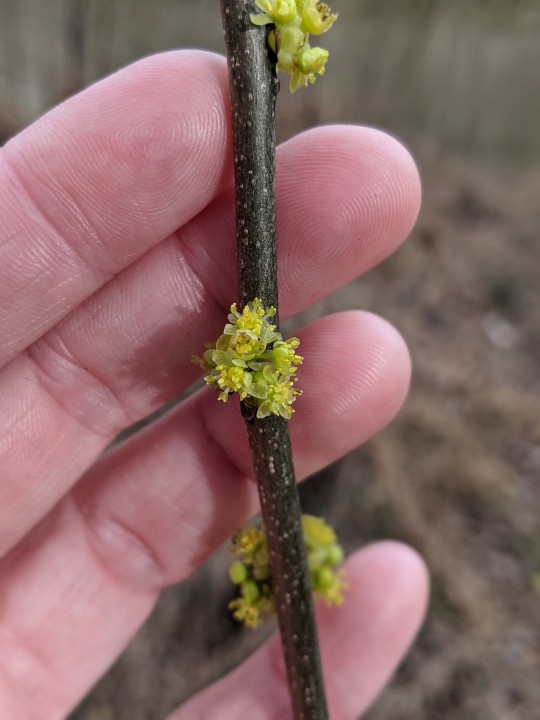

What's poppin' in late February: Part 5 of ~7
Lindera benzoin - Spicebush
Nice native shrub, not terribly noticeable most of the year. But in the spring, when the woods are still mostly gray-brown, its little yellow-green flowers stand out brightly. If you see one, make a tiny little wound in the bark with your fingernail & smell it. I can't describe it well - exotic, perfume/incense, also somehow chemical/industrial? - but I recommend experiencing it.
23 notes
·
View notes
Text
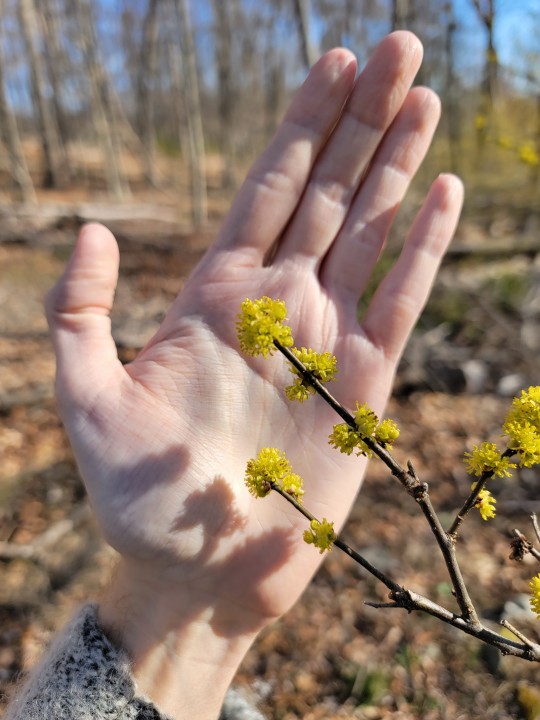
Northern Spice Bush - Lindera benzoin
This small understory shrub/tree is a lovely aromatic spring bloomer. Around April, the understory of less disturbed-mesic eastern forests are typically blanketed by a yellow hue, the flowering habit of this species is bountiful so it makes a great garden species. Additionally the leaves and bark make a wonderful tea, the leaves historically served as an alternate for allspice seasoning for early settlers.
As far as ecology, this species serves as host for several butterfly and moth species. Most notably the spicebush swallowtail, a lovely black winged species with light blue tints around the lower wing. Their caterpillar stage typically hides between folded leaves and has the appearance of large eyes (look them up they're very interesting). The leaves are used as fodder for deer and the berries serve many bird species, I often have trouble finding berries because it's such a popular food source.
#native plant profiles#northern spicebush#lindera benzoin#north eastern american native plants#new jersey#forest#understory shrubs#nature#spring
8 notes
·
View notes
Text
i imagine a world where people enjoy the beauty and uniqueness of their native plants instead of planting the same Approved plants everywhere one goes ....
#i was reading a blog by someone in new york state who has a woodland garden!#and they wrote of forsythia and how it's beautiful yellow and well loved and widely planted#but witchhazel (hamamelis virginiana) and spicebush (lindera benzoin) both have beautiful yellow flowers and have ecological value!!#because they are native plants vs forsythia being native to eurasia.#v
3 notes
·
View notes
Text

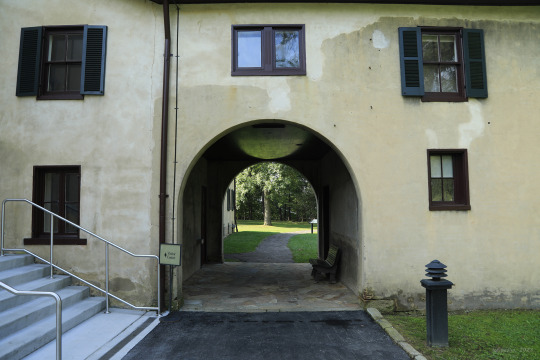
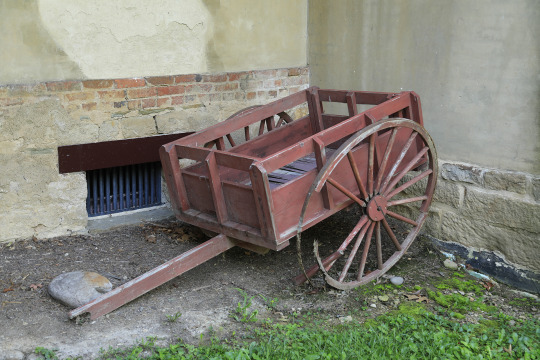


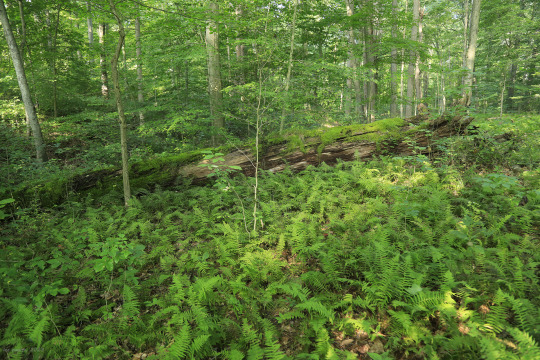

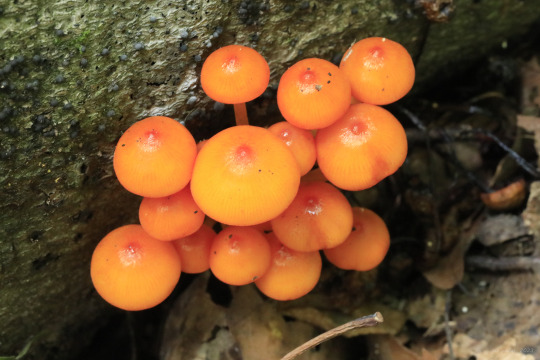
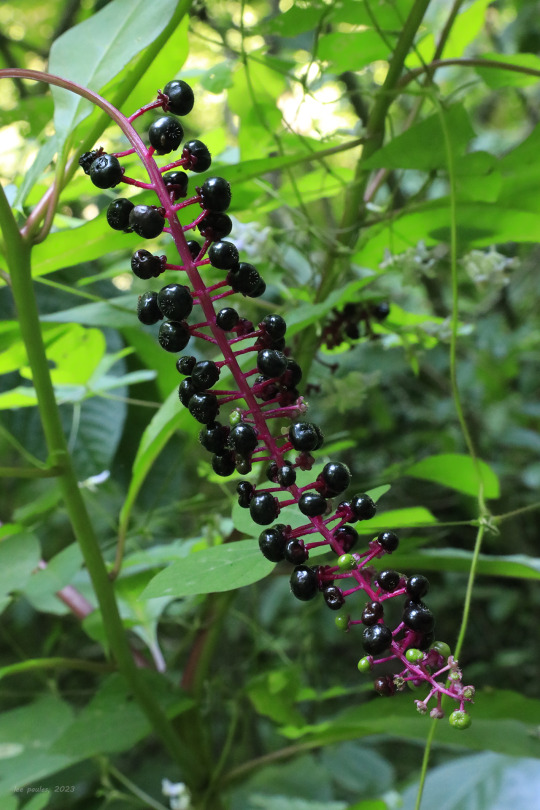
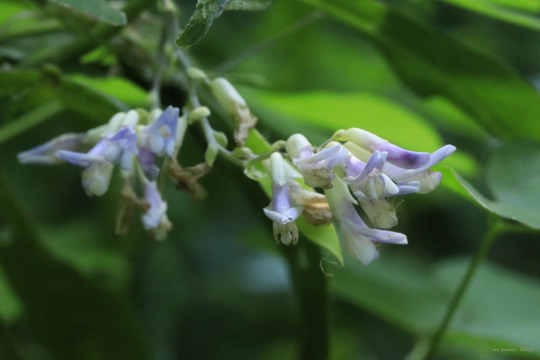

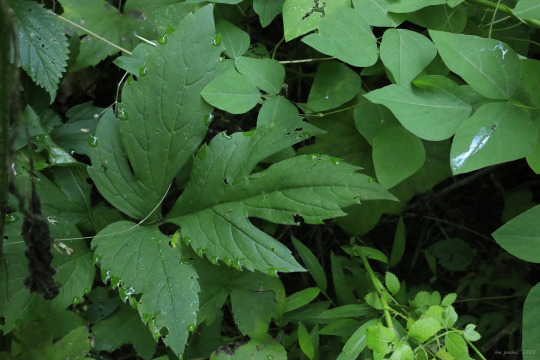
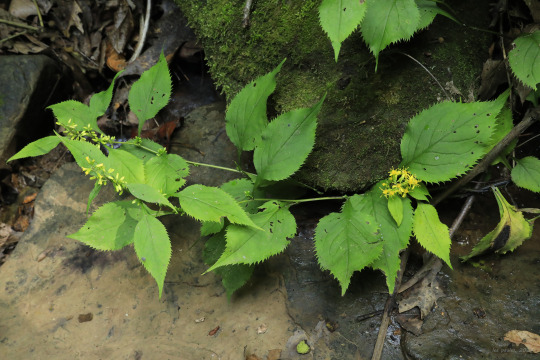
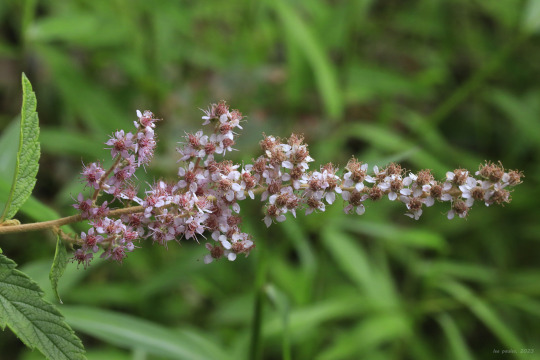
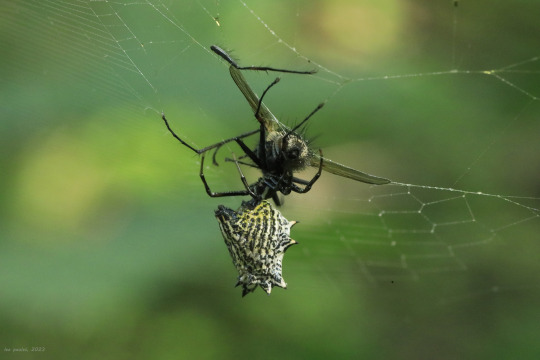

A few photos above from an early morning hike at the Friendship Hill National Historic Site near Pt. Marion, Pennsylvania. If you want to learn more about the history of this sprawling estate, you can go to this link or search for prior posts from the main search page of my Tumblr blog. In addition to the historic homestead of Albert Gallatin, the park features ten miles of hiking trails through verdant oak-hickory and riparian forests. This time of year, the Central Appalachian forest is rich with fungi, legumes, berries, and the loveliest orb-weavers imaginable.
From top: wingstem (Verbesina alternifolia), also known as yellow ironweed, a late summer aster so named because the petioles of its leaves run down the plant's stem; northern spicebush (Lindera benzoin), a gorgeous native shrub whose bright red berries in late summer are followed by the most extraordinary gold foliage in the fall; orange mycena (Mycena leaiana), a lovely, gregarious fungi of deciduous logs whose pigment has shown antibacterial and anti-cancer properties; the ripened but dangerously toxic berries of pokeweed (Phytolacca americana), whose young leaves are used by mountain folk to make poke sallet (but only after repeated cleansings to remove the toxins); American hog-peanut (Amphicarpaea bracteata), a lovely twining vine whose roots and ground nut are edible; cutleaf coneflower (Rudbeckia laciniata), also known as green-headed coneflower and wild goldenglow, a close relative of black-eyed Susan with gorgeous, pinnately-dissected leaves (the leaf photo also shows the characteristic tri-foliate leaf pattern of hog-peanut); zig-zag goldenrod (Solidago flexicaulis), one of two adorable woodland goldenrods that grow in this area (the other being blue-stemmed goldenrod), both of which produce clusters of brilliant yellow flowers in both their leaf axils and at the ends of their stems; steeplebush (Spiraea tomentosa), also known as hardhack, which produces delicate plumes of pink flowers in late summer; a spined micrathena (Micrathena gracilis), which has ensnared a fly in her web; and an arrowhead orb weaver (Verrucosa arenata), also known as a triangle orb-weaver, a sparkling gem of an arachnid that reels in its prey like a fisherman dragging in a net.
#appalachia#vandalia#wildflowers#flora#summer#arachnid#pennsylvania#friendship hill national historic site#fungi#orange mycena#wingstem#yellow ironweed#northern spicebush#pokeweed#american hog-peanut#cutleaf coneflower#green-headed coneflower#wild goldenglow#zig-zag goldenrod#steeplebush#hardhack#orb-weaver#spider#spined micrathena#arrowhead orb-weaver#triangle orb-weaver
23 notes
·
View notes
Photo
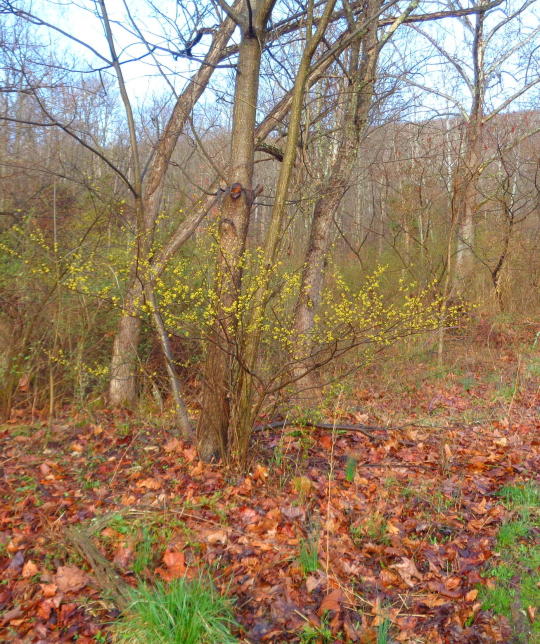
Spicebush (Lindera benzoin) blooming with its tiny clumps of yellow flowers. The leaves and twigs smell lovely, like lemon furniture polish*, the berries are red and beautiful. Whenever I am cutting brush this is one of the shrubs I leave because it’s native here and beautiful and useful.
* It’s often identified as smelling ‘lemony,’ which is broadly correct, but it could be more accurately described as smelling *exactly* like Lemon Pledge furniture polish.
The berries look like this:

and the associated butterfly, Spicebush Swallowtail, looks like this:

48 notes
·
View notes
Text
Lindera benzoin

1 note
·
View note
Photo


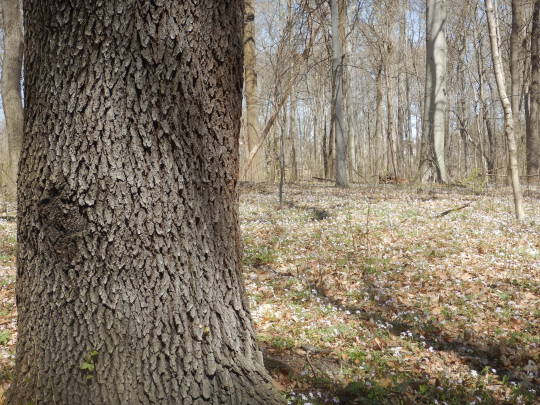
Old growth grove, Paw Paw Loop Trail, Caldwell Nature preserve.
Examples of many incredible hardwoods can be seen throughout the forest floor along with the thickest early ephemeral population in Cincinnati.
1, 55 DBH Liriodendron tulipifera with a back drop of Asimina triloba and Lindera benzoin understory. The white is a mixed early spring forbe carpet.
2. Asimina triloba and younger trees thicken the understory
3. 40 dbh Prunus serotina, same back drop applies
#Botany#plantblr#ohio#forrestcore#asimina triloba#asimina#prunus serotina#prunus#liriodendron#liriodendron tulipifera#lindera#lindera benzoin
14 notes
·
View notes
Photo
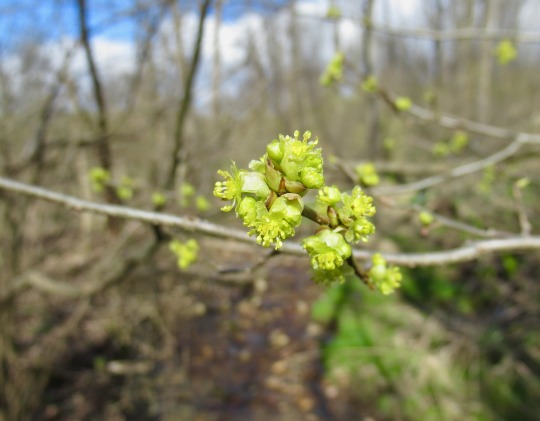
Spicebush is in bloom, too. Trees are still brown but it’s getting spring-ish.
77 notes
·
View notes
Photo


Tasty fruits: black raspberry and spicebush
3 notes
·
View notes
Text

Spicebush is one of the first big woody plants to bloom. I’ll remember it now, for its little green flowers that color the still-grey woods, but if you ever forget, just scrape a bit of bark off with your fingernail and smell it.
13 notes
·
View notes
Photo

Spicebush flowers (by me)
#Spicebush#Lindera benzoin#Lindera#Lauraceae#Laurales#flowers#shrub#spring#Highland Park#Middlesex County#New Jersey#mine
14 notes
·
View notes
Text


9/6/21
0 notes
Link
For the record, this is a strongly-scented, intense native spice that survived (somehow) all those North American glaciers. Imagine allspice and a handful of ripe cloves on steroids. The flowers bloom during spring floods and smell like baskets of ripe lemons.

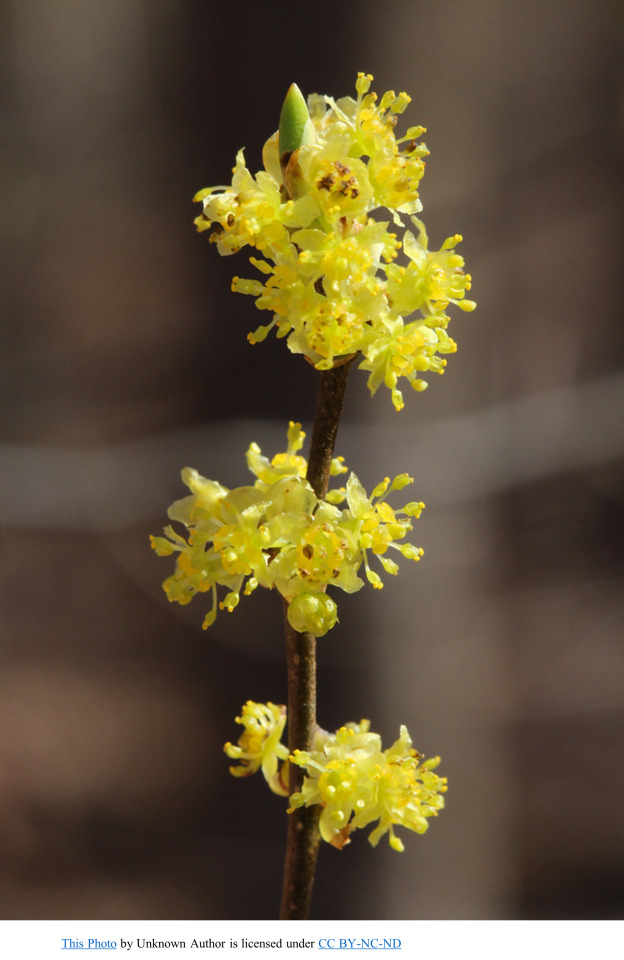
3 notes
·
View notes
Photo


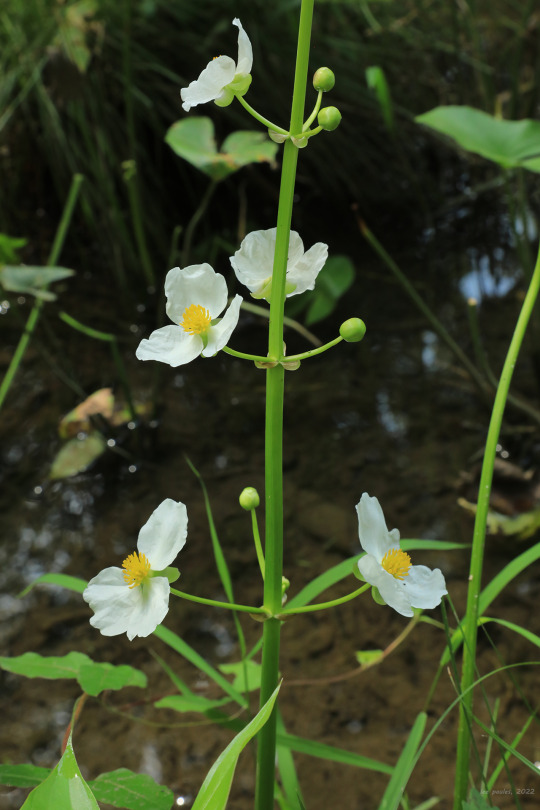

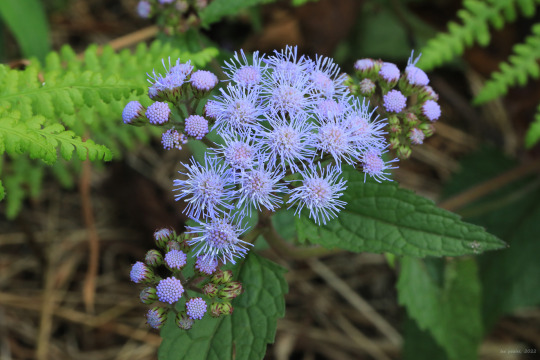



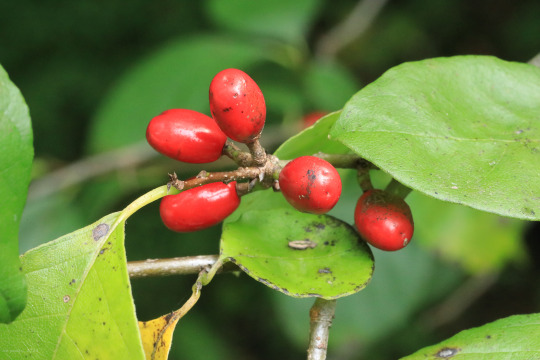
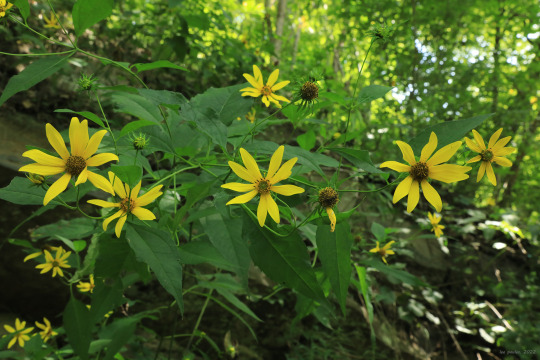
Photos from a late summer bike ride on the Mon River Trail. With autumn just around the corner, the climatic, life-sustaining ceremonies of the season have taken on a frantic, bittersweet urgency, from the proliferation of late summer blooms to the frantic chirrups of insects in search of mates before they succumb to the first frost of October. As the deep greens of summer fade and begin to sacrifice themselves to a fiery self-immolation, I salute Nature’s relentless push to plant the seeds of next year’s renewal.
From top: broadleaf arrowhead (Sagittaria latifolia), also known as duck-potato and wapato, an attractive aquatic plant whose edible tuber was an important source of starch for Native Americans; great blue lobelia (Lobelia siphilitica); a showy relative of cardinal flower with blue, split-lip flowers; blue mistflower (Conoclinium coelestinum), also known as wild ageratum and blue boneset, an unusual late summer aster with disc flowers only; tall coreopsis (Coreopsis tripteris), also known as tall tickseed, a grand, stately perennial up to 8 feet tall with distinctive tripartite leaves; a goldenrod soldier beetle (Chauliognathus pensylvanicus) navigating a wingstem flower (Verbesina alternifolia); northern spicebush (Lindera benzoin), a colonizing shrub whose luminous yellow leaves in fall contrast with its brilliant-red, aromatic berries; and pale-leaved sunflower ( Helianthus strumosus), a perennial sunflower whose leaves are mostly opposite in arrangement with long petioles and pale undersides.
#appalachia#vandalia#west virginia#mon river trail#late summer#life#renewal#flora#wildflowers#insects#sagittaria latifolia#broadleaf arrowhead#duck-potato#wapato#lobelia siphilitica#great blue lobelia#conoclinium coelestinum#blue mistflower#wild ageratum#blue boneset#coreopsis tripteris#tall coreopsis#tall tickseed#chauliognathus pensylvanicus#goldenrod soldier beetle#verbesina alternifolia#wingstem#Lindera benzoin#northern spicebush#helianthus strumosus
100 notes
·
View notes
Text
I’ve been browsing seeds and perennial catalogs trying to figure out which herbs/aromatics I want to add this year
Sweet cicely myrrhis odorata is defintely in the to-add list. it blooms during the durth time for the bees. Also seems like a really great ally to get to know (whoops native sweet cicely are species of osmorhiza; myrrhis is native to Europe)
Another sweet plant I was recommend to grow is sweet fern comptonia peregrina not common locally but a staple to Rhode Island where I grew up and a native aromatic
I want to establish my artemisia bed, most of the plants I have growing around in random places so I want to bring them all together. I have mugwort artemisia vulgaris, wormwood artemisia absinthium, french taragon artemisia dracunculus, and I have seeds from the annual sweet annie artemisia annua, my favorite perrenial grower has a few others, I might consider adding southernwood artemisia abrotanum particularly a camphor cultivar.
I am also considering adding spotted bee balm monarda punctata to my patch of mondaras (scarlet and rose didyma and wild fitulosa)
And I definitely need to grow more anise hyssop agastache foeniculum it’s a favorite I don’t have enough of
I want to find some seeds to grow a patch of rabbit tobacco pseudognaphalium obtusifolium because I haven’t found any growing locally yet
I grow a little bit of holy basil ocimum tenuiflorum every year but this year I want to do I whole bed of tulsi vana ocimum gratissimum
I know I want to plant some spice bush lindera benzoin but I’m not sure where to find them.
I’ve been thinking about clary sage salvia sclarea, costmary chyrsanthemum balsamita, and true hyssop hyssopus officinalis but I’m not quite sure
I’d love to hear your favorite aromatic plant(s) especially if it’s rather unusual :)
24 notes
·
View notes


